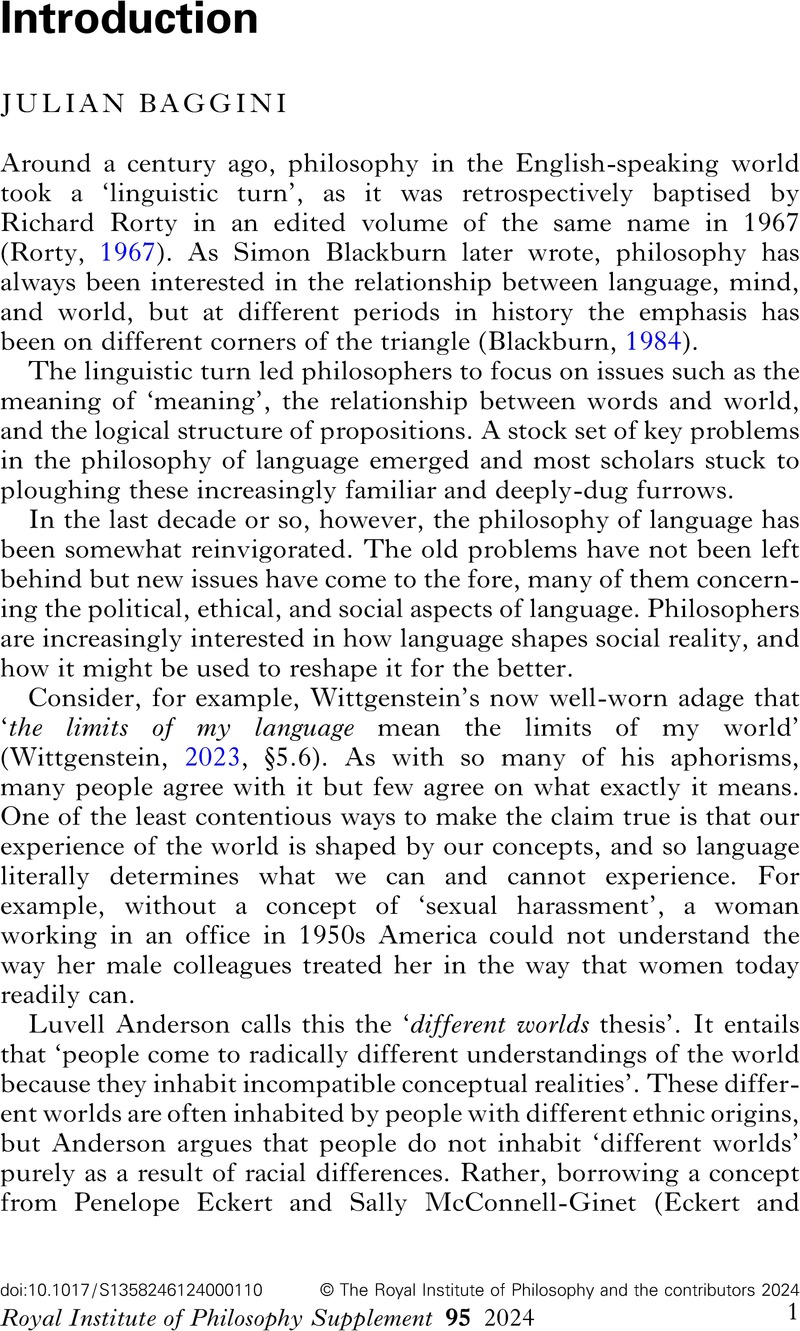No CrossRef data available.
Article contents
Abstract
An abstract is not available for this content so a preview has been provided. Please use the Get access link above for information on how to access this content.

- Type
- Introduction
- Information
- Copyright
- Copyright © The Royal Institute of Philosophy and the contributors 2024
References
Bruner, Jerome, Making Stories: Law, Literature, Life (Cambridge, MA: Harvard University Press, 2002).Google Scholar
Eckert, Penelope and McConnell-Ginet, Sally, ‘Communities of Practice: Where Language, Gender, and Power All Live’, in Locating Power: Proceedings of the Second Berkeley Women and Language Conference, April 4 and 5, 1992 (Berkeley, CA: Berkeley Women and Language Group, University of California, 1992), 89–99.Google Scholar
Frege, Gottlob, ‘On Sense and Reference’, in Geach, P. and Black, M. (eds), Translations from the Philosophical Writings of Gottlob Frege (Oxford: Blackwell, 1952).Google Scholar
Glissant, Édouard, Poetics of Relation, Betsy Wing (trans.), (Ann Arbor: University of Michigan Press, 1997).Google Scholar
Hall, David and Ames, Roger, Thinking from the Han (Albany: State University of New York Press, 1998).Google Scholar
McGowan, M.K., ‘Conversational Exercitives: Something Else We Do with Our Words’, Linguistics and Philosophy, 27 (2004), 93–111.Google Scholar
Rorty, Richard (ed.), The Linguistic Turn: Recent Essays in Philosophical Method (Chicago: The University of Chicago Press, 1967).Google Scholar
Wittgenstein, Ludwig, Tractatus Logico-Philosophicus, Booth, Alexander (trans.), (London: Penguin, 2023).Google Scholar


